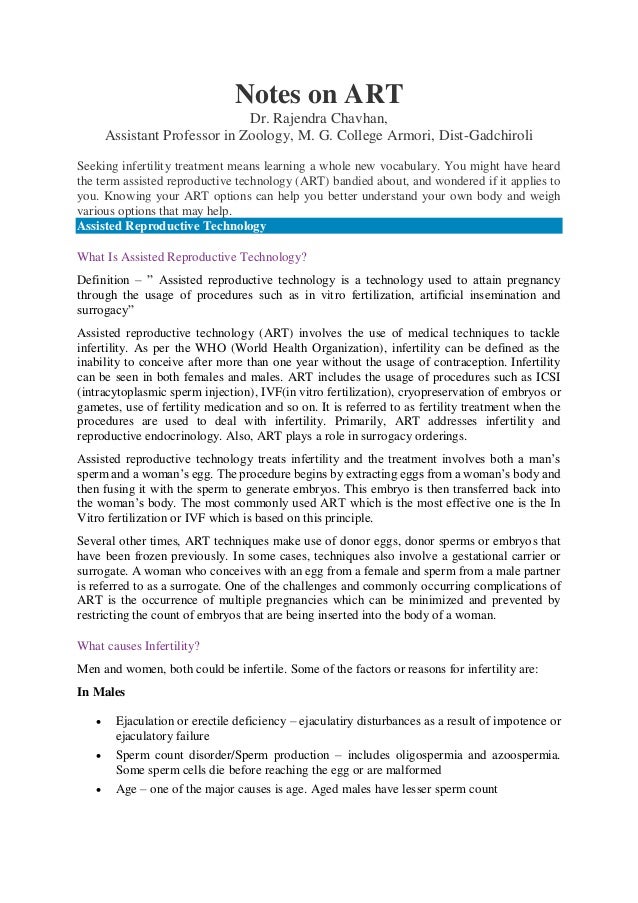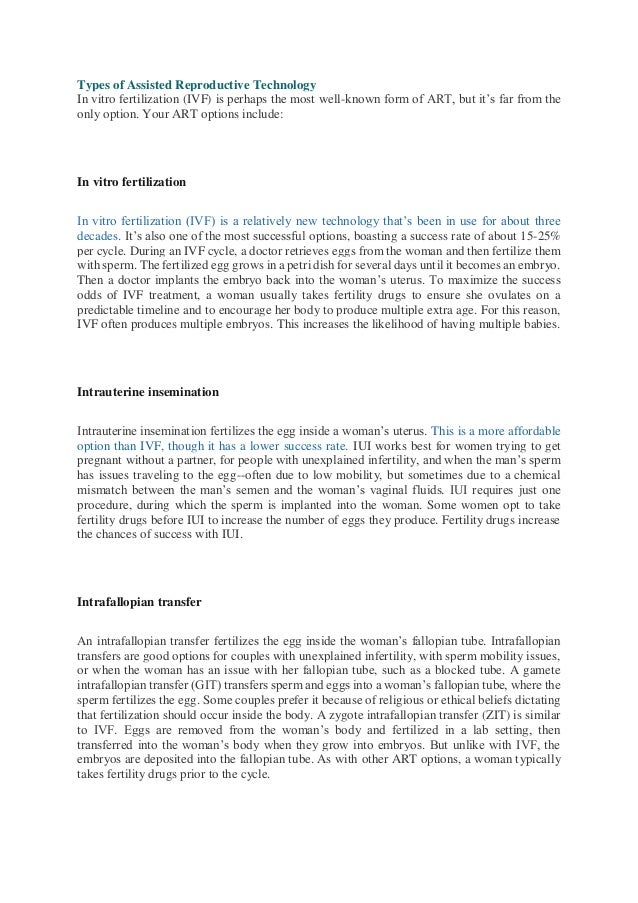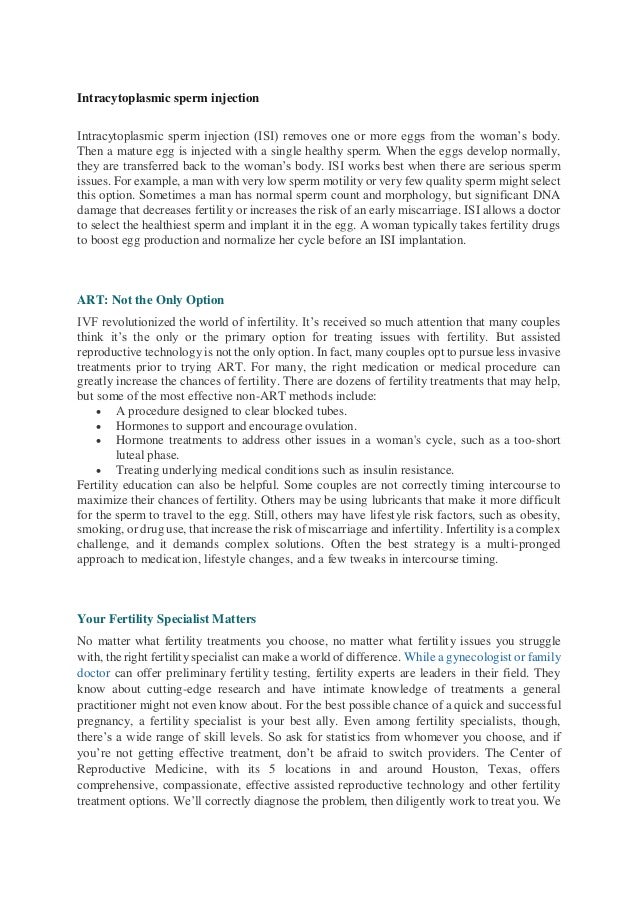The document discusses assisted reproductive technology (ART), which encompasses various medical procedures aimed at addressing infertility through techniques like in vitro fertilization (IVF), artificial insemination, and surrogacy. It outlines the common causes of infertility for both males and females, detailing ART procedures, their success rates, and alternative non-ART options. The document emphasizes the importance of consulting a fertility specialist for effective treatment and offers a brief overview of different ART methods, including IVF and intracytoplasmic sperm injection (ICSI).





